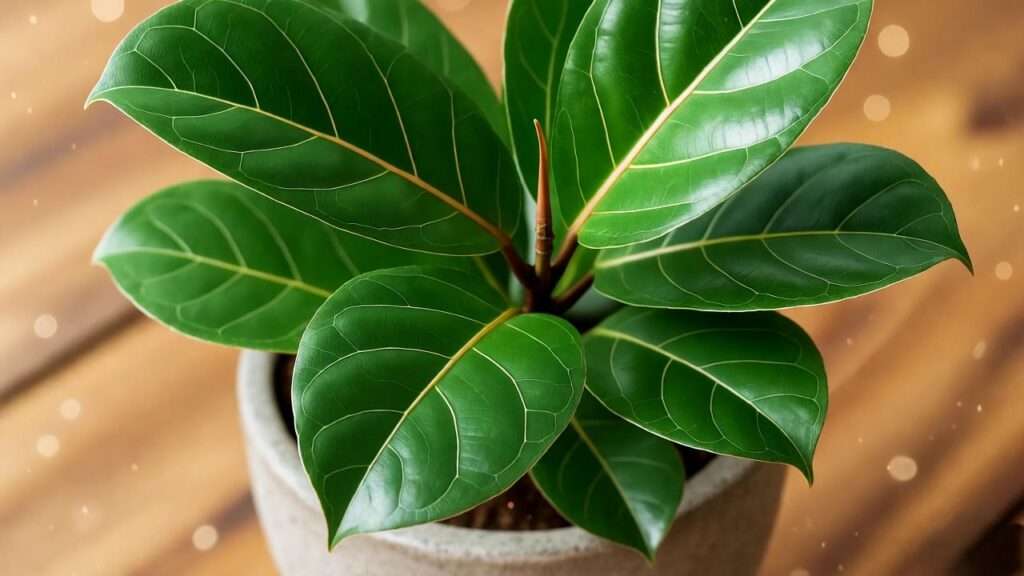Picture this: you’ve just brought home a stunning Audrey Plant, its glossy green leaves practically glowing with promise. You envision it as the centerpiece of your living room, a lush symbol of your growing plant collection. But then, a week later, a few leaves droop, and you’re left wondering, “What am I doing wrong?” Don’t worry—this comprehensive guide to Ficus benghalensis care is here to help you nurture your Audrey Plant into a thriving masterpiece. Whether you’re a seasoned plant parent or a beginner, these expert-backed tips will ensure your plant flourishes. From light and watering to pruning and propagation, we’ve got you covered with everything you need to keep your Audrey Plant healthy and vibrant. 🌱
As a horticulturist with over a decade of experience cultivating Ficus species, I’ve seen firsthand how proper care can transform an Audrey Plant into a showstopper. This guide draws on years of hands-on practice and the latest botanical research to deliver actionable advice that aligns with your goal: a thriving, beautiful plant. Let’s dive into the essentials of Audrey Plant care and unlock the secrets to its success.
What Is the Audrey Plant? Understanding Ficus Benghalensis 🌳
Overview of the Audrey Plant
The Audrey Plant, scientifically known as Ficus benghalensis, is a striking member of the Ficus family, celebrated for its broad, velvety green leaves and graceful growth. Native to India and Southeast Asia, this plant is often called the “Banyan Fig” due to its resemblance to the majestic banyan trees that spread wide canopies in tropical regions. As a houseplant, the Audrey Plant has surged in popularity for its air-purifying qualities and ability to add a touch of elegance to any space. Unlike its outdoor cousins, which can grow into massive trees, the indoor Audrey Plant is more compact, making it ideal for homes and offices.
Its leaves, with their soft texture and subtle veining, are a standout feature, often drawing comparisons to the fiddle-leaf fig (Ficus lyrata). However, the Audrey Plant is generally easier to care for, offering a balance of beauty and manageability that appeals to plant enthusiasts of all levels.
Why Choose an Audrey Plant?
Why should you invite an Audrey Plant into your home? For starters, its aesthetic appeal is undeniable—its lush foliage creates a tropical vibe that elevates any room. Beyond looks, it’s a natural air purifier, removing toxins like formaldehyde from the air, according to studies from NASA’s Clean Air Study. It’s also relatively adaptable, thriving in a range of indoor conditions with proper care. Culturally, the banyan tree holds symbolic significance in many traditions, representing strength, longevity, and growth, making it a meaningful addition to your space.
“The Audrey Plant is a perfect blend of beauty and resilience,” says Dr. Priya Sharma, a botanist specializing in tropical plants. “Its forgiving nature makes it an excellent choice for both novice and experienced growers.”
Ideal Growing Conditions for Your Audrey Plant ☀️
Light Requirements
Light is the lifeblood of your Audrey Plant. This Ficus thrives in bright, indirect light, mimicking the dappled sunlight of its native tropical forests. Place it near a north- or east-facing window where it can bask in soft, filtered light for 6-8 hours daily. Direct sunlight can scorch its delicate leaves, causing unsightly brown spots, so avoid south-facing windows unless you use sheer curtains to diffuse the rays.
If your home lacks natural light, don’t despair. A full-spectrum grow light can work wonders, providing the 1000-2000 foot-candles of light intensity that Audrey Plants crave. Position the light 12-18 inches above the plant and keep it on for 12-14 hours daily. Regularly rotate your plant to ensure even light exposure, preventing lopsided growth.
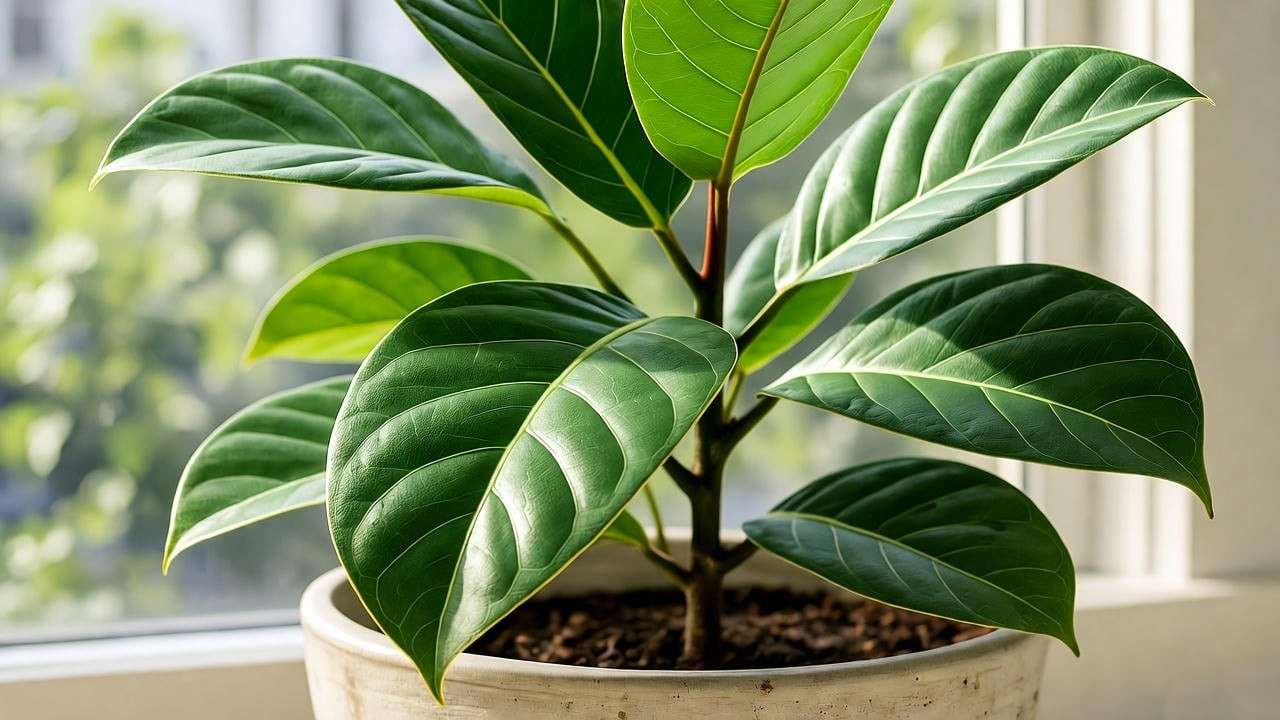
Temperature and Humidity
Audrey Plants prefer warm, humid conditions reminiscent of their tropical origins. Maintain a temperature range of 65-80°F (18-27°C), avoiding sudden drafts or cold spots near air conditioners. In winter, keep your plant away from chilly windows or heating vents, which can dry it out.
Humidity is equally critical, with 50-60% being ideal. Most homes hover around 30-40% humidity, so you’ll need to boost it. Try these methods:
- Misting: Lightly mist the leaves 2-3 times weekly with distilled water to avoid mineral buildup.
- Pebble Tray: Place the pot on a tray filled with pebbles and water, ensuring the pot base doesn’t touch the water.
- Humidifier: Invest in a small humidifier for consistent moisture, especially in dry climates.
Soil and Potting Needs
The right soil mix is crucial for preventing root rot, a common issue with Ficus plants. Opt for a well-draining potting mix, such as a blend of 50% peat or coco coir, 25% perlite, and 25% compost or bark. This ensures adequate drainage while retaining enough moisture to keep roots happy.
Choose a pot with drainage holes to prevent waterlogging. A pot 1-2 inches larger than the root ball is ideal for young plants, allowing room for growth without overwhelming the roots. Repot every 1-2 years in spring, refreshing the soil to replenish nutrients. When repotting, gently loosen the root ball and trim any damaged roots to encourage healthy growth.
Watering Your Audrey Plant: Striking the Right Balance 💧
How Often to Water
Watering is where many Audrey Plant owners stumble, but it’s simpler than it seems. The golden rule: water when the top 1-2 inches of soil feel dry to the touch, typically every 7-10 days in spring and summer. In fall and winter, reduce watering to every 10-14 days as the plant’s growth slows. Always check the soil before watering—never water on a fixed schedule, as environmental factors like light and humidity affect moisture needs.
Use room-temperature water to avoid shocking the roots, and pour evenly until water drains from the bottom of the pot. Discard excess water from the saucer to prevent root rot. If you’re unsure, a moisture meter can be a game-changer, providing precise readings to guide your watering routine.
Signs of Overwatering vs. Underwatering
Overwatering and underwatering are the top culprits behind Audrey Plant woes. Here’s how to spot and fix them:
- Overwatering:
- Symptoms: Yellowing leaves, soggy soil, or a musty smell.
- Solution: Let the soil dry out completely before watering again. Check for root rot by inspecting the roots—if they’re brown and mushy, trim them and repot in fresh soil.
- Underwatering:
- Symptoms: Drooping leaves, dry soil, or leaf edges turning brown.
- Solution: Water thoroughly and adjust your schedule to ensure consistent moisture.
Pro Tip: “A moisture meter is like a cheat code for plant care,” says plant care expert Maria Gonzalez. “It takes the guesswork out of watering, especially for Ficus plants like the Audrey.”
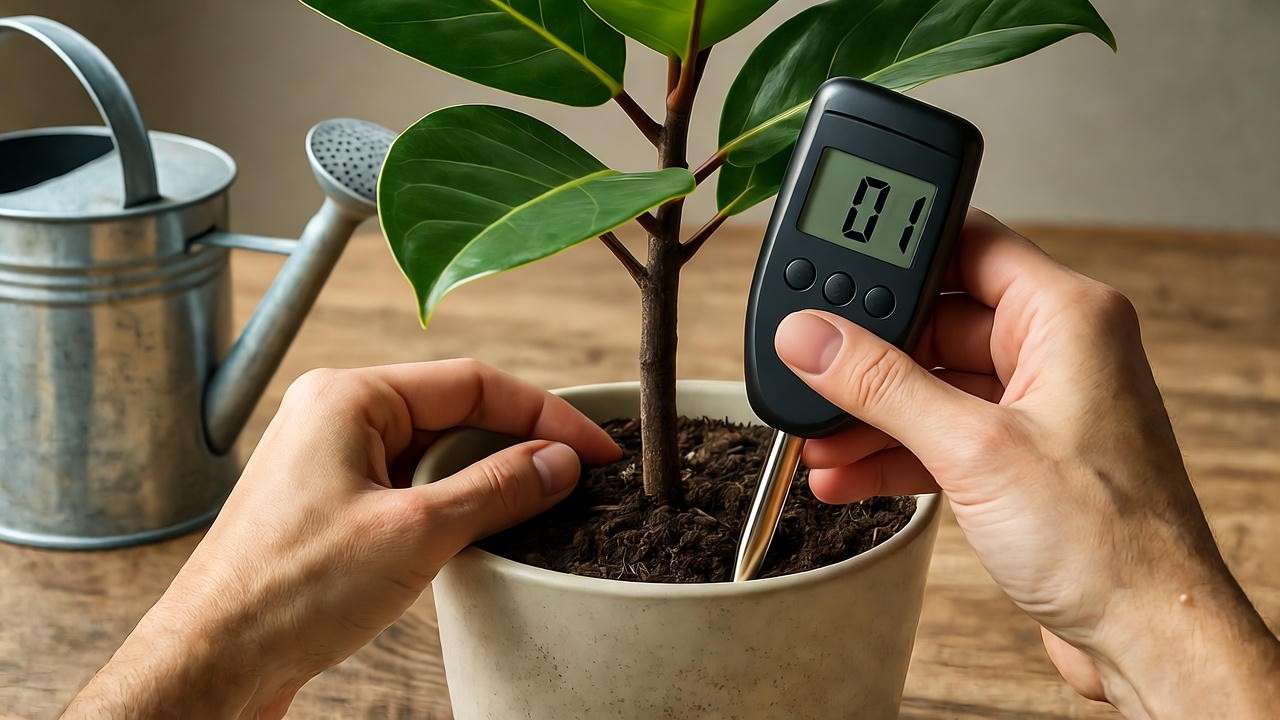
Feeding and Fertilizing Your Audrey Plant 🌿
Best Fertilizers for Ficus Benghalensis
To keep your Audrey Plant thriving, regular feeding during its active growing season (spring and summer) is essential. A balanced, water-soluble fertilizer with an N-P-K ratio of 10-10-10 or 20-20-20 works wonders, providing equal parts nitrogen, phosphorus, and potassium to support leaf growth, root health, and overall vigor. Dilute the fertilizer to half strength and apply it monthly, following the package instructions to avoid over-fertilizing, which can cause leaf burn or salt buildup in the soil.
During fall and winter, when growth slows, pause fertilizing to let the plant rest. Always water the plant before fertilizing to prevent root damage, and ensure the soil is moist to help nutrients absorb evenly.
Organic Alternatives
For eco-conscious plant parents, organic fertilizers are a fantastic option. Compost tea, made by steeping compost in water, delivers a gentle nutrient boost without synthetic chemicals. Alternatively, worm castings can be mixed into the top layer of soil for a slow-release nutrient source. Both options enrich the soil microbiome, promoting long-term plant health.
Case Study: When Sarah, a plant enthusiast from Seattle, noticed Audrey Plant’s growth stalling, she switched to monthly applications of diluted compost tea. Within two months, her plant produced vibrant new leaves and grew 6 inches taller, proving the power of organic feeding.
Pruning and Shaping Your Audrey Plant ✂️
Why Prune Your Audrey Plant?
Pruning is a key part of Audrey Plant care, offering multiple benefits. It encourages healthy growth by removing dead or damaged leaves, improves air circulation to prevent pests, and allows you to control the plant’s size and shape. Regular pruning also stimulates new growth, keeping your Ficus benghalensis lush and full. For indoor plants, pruning is especially important to prevent them from outgrowing their space.
Step-by-Step Pruning Guide
Follow these steps to prune your Audrey Plant safely and effectively:
- Gather Tools: Use clean, sharp pruning shears or scissors, sterilized with rubbing alcohol to prevent disease spread.
- Identify Targets: Look for dead, yellowing, or damaged leaves, as well as leggy stems that disrupt the plant’s shape.
- Make Clean Cuts: Cut just above a leaf node (where a leaf meets the stem) at a 45-degree angle to encourage new growth.
- Handle Sap Carefully: Audrey Plants exude a milky sap that can irritate skin. Wear gloves and wipe tools immediately after pruning.
- Dispose of Cuttings: Remove pruned material to avoid attracting pests.
Prune in early spring before the growing season for best results, but light maintenance pruning can be done year-round as needed.

Shaping for Aesthetic Appeal
Want your Audrey Plant to look like a miniature tree or a bushy showpiece? Shaping is the answer. To create a tree-like form, trim lower leaves and side shoots, focusing growth on a single stem. For a fuller, bushier look, pinch back the tips of new growth to encourage branching. Use plant ties or stakes to guide the plant’s structure if desired, but avoid over-manipulating to prevent stress.
Common Audrey Plant Problems and Solutions 🐛
Pests and Diseases
Like all houseplants, Audrey Plants can face pest and disease challenges, but early detection and treatment keep them in check. Common pests include:
- Spider Mites: Look for webbing or speckled leaves. Treat with neem oil or insecticidal soap, applied weekly until cleared.
- Mealybugs: Spot these white, cottony pests in leaf axils. Dab with alcohol-soaked cotton swabs and follow with neem oil.
- Scale: These small, brown bumps cling to stems. Scrape off gently and treat with horticultural oil.
Diseases like root rot, caused by overwatering, or leaf spot, triggered by fungal infections, are also concerns. Prevent root rot by ensuring proper drainage and avoiding waterlogged soil. For leaf spot, remove affected leaves and improve air circulation. Always quarantine new plants to prevent pest spread.
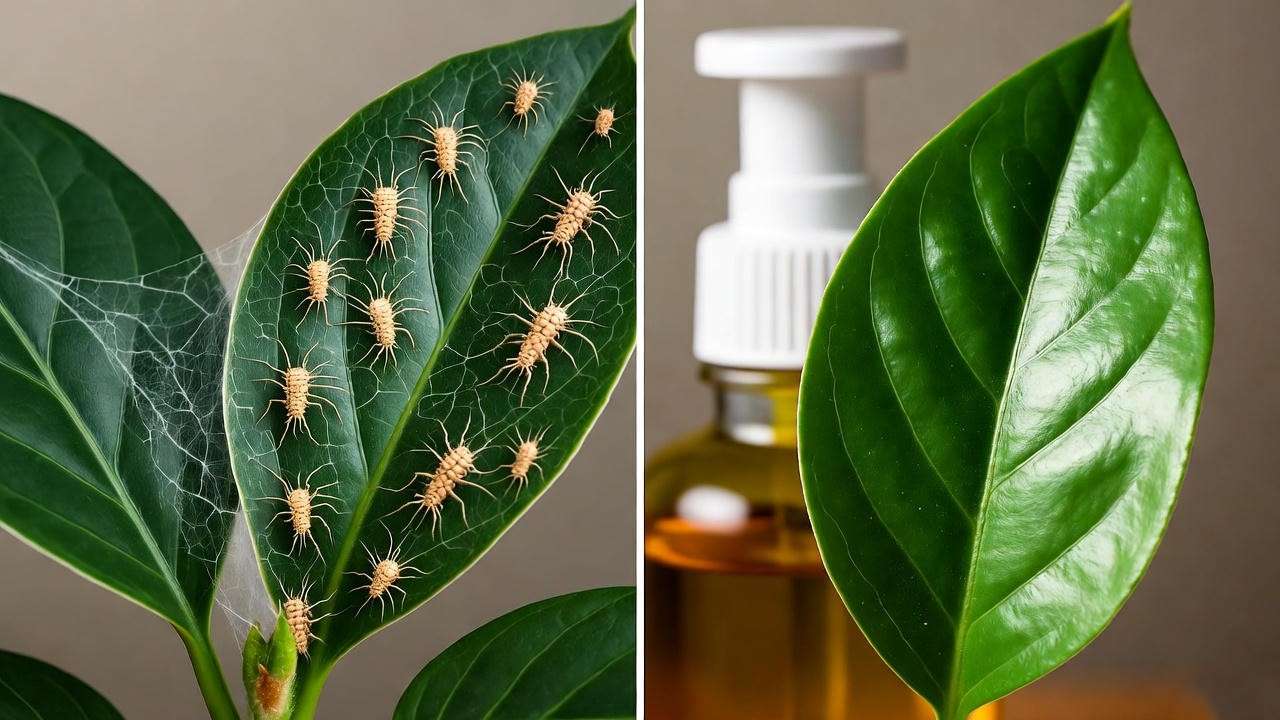
Leaf Drop Troubleshooting
Leaf drop is a common complaint among Audrey Plant owners, often caused by environmental stress. Use this checklist to diagnose and fix the issue:
- Sudden Light Changes: Moving the plant to a drastically different light condition can cause shock. Gradually acclimate it to new spots.
- Overwatering: Check soil moisture and adjust watering if soggy.
- Low Humidity: Boost humidity with a humidifier or pebble tray.
- Temperature Fluctuations: Keep the plant away from drafts or heating sources.
Expert Insight: “Leaf drop is your plant’s way of signaling distress,” says Dr. Emily Chen, a plant pathology expert. “Check light, water, and humidity first—most issues stem from these factors.”
If leaf drop persists, inspect roots for rot and repot if necessary. With prompt action, your plant can recover fully.
Propagating Your Audrey Plant: Grow Your Collection 🌱
Methods of Propagation
Propagating your Audrey Plant is a rewarding way to expand your collection or share with friends. The two most effective methods are stem cuttings and air layering.
Stem Cuttings:
- Select a healthy stem with 2-3 leaves, about 4-6 inches long.
- Cut below a node with sterilized shears.
- Remove lower leaves and place the cutting in water or a moist potting mix.
- Keep in bright, indirect light and change water weekly (if in water) or keep soil moist.
- Roots should form in 3-4 weeks; transplant to soil once roots are 2 inches long.
Air Layering:
- Choose a healthy stem and make a small upward cut halfway through it.
- Wrap the cut with moist sphagnum moss and secure with plastic wrap.
- Keep moss moist; roots will form in 4-6 weeks.
- Cut below the new roots and pot in fresh soil.
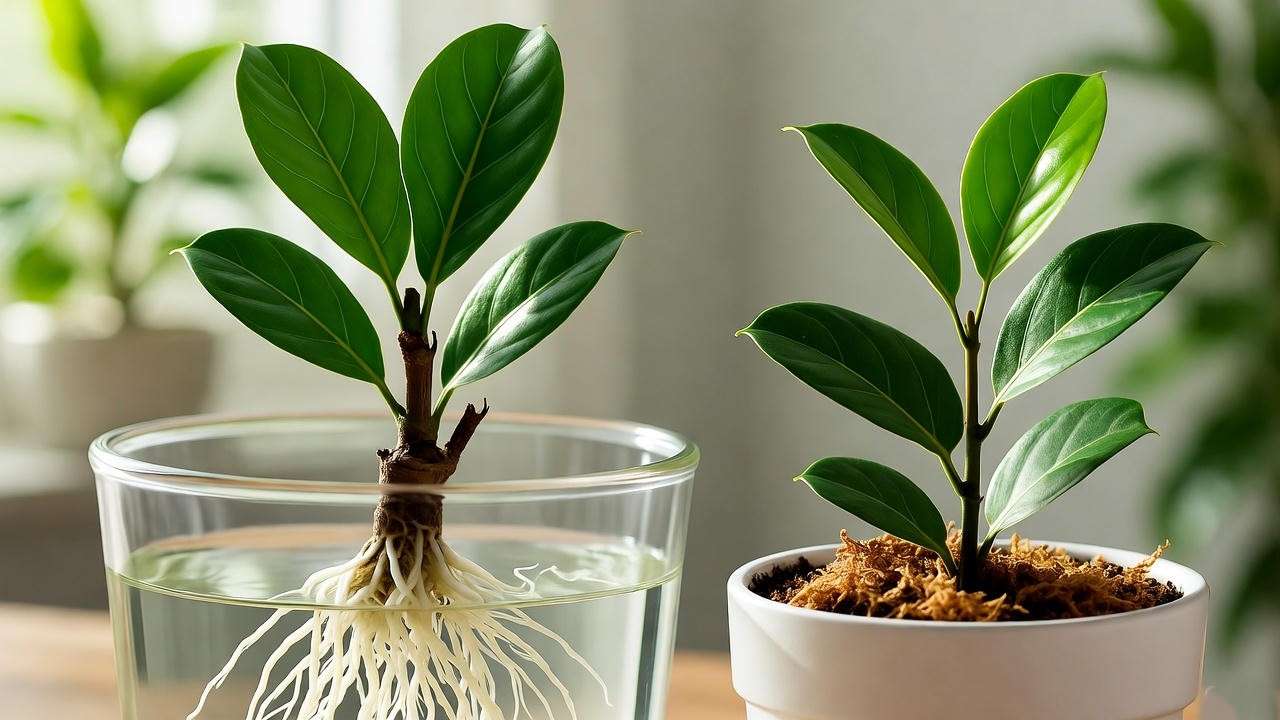
Tips for Successful Propagation
For best results, propagate in spring or summer when the plant is actively growing. Maintain high humidity (60% or more) and warm temperatures (70-75°F or 21-24°C). Avoid direct sunlight, which can stress cuttings. Common mistakes include overwatering or using unsterilized tools, so keep tools clean and monitor moisture levels.
Styling and Displaying Your Audrey Plant 🏡
Incorporating Audrey Plants in Home Decor
The Audrey Plant’s lush foliage makes it a versatile decor element. Place it in a bright corner of your living room as a statement piece, or use it to soften the look of an office space. A ceramic or woven pot in neutral tones complements its green leaves, while a sleek modern pot adds a contemporary flair. Elevate smaller plants on a stand to create height in your decor scheme.
Companion Plants
Pair your Audrey Plant with other low-maintenance, tropical houseplants for a cohesive indoor jungle. Great companions include:
- Monstera Deliciosa: Its bold, fenestrated leaves contrast beautifully with Audrey’s softer foliage.
- Pothos: Trailing vines add texture to the display.
- ZZ Plant: Its upright, glossy leaves complement Audrey’s structure.
Group plants with similar light and humidity needs to simplify care and create a harmonious look.
FAQs About Audrey Plant Care ❓
Frequently Asked Questions
To address common concerns and boost the article’s SEO value, here are answers to frequently asked questions about Audrey Plant care, tailored to the needs of plant enthusiasts:
- Why is my Audrey Plant dropping leaves?
Leaf drop often results from environmental stress, such as overwatering, low humidity, or sudden light changes. Check the soil moisture, ensure humidity is at least 50%, and avoid moving the plant abruptly. Refer to the “Leaf Drop Troubleshooting” section for a detailed action plan. - Can Audrey Plants grow outdoors?
Yes, in warm climates (USDA zones 10-12), Audrey Plants can thrive outdoors in partial shade. Protect them from direct sun and freezing temperatures. Indoors, they’re better suited for most regions to maintain consistent conditions. - How do I clean the leaves for optimal health?
Dust on leaves can block light and hinder photosynthesis. Wipe leaves gently with a damp, soft cloth every 2-3 weeks, using distilled water to prevent mineral spots. Avoid leaf shine products, which can clog pores. - Is the Audrey Plant toxic to pets?
Yes, the plant’s milky sap is mildly toxic to cats and dogs, causing stomach upset if ingested. Keep it out of reach of pets and clean up any fallen leaves promptly. - How fast does an Audrey Plant grow?
With proper care, Audrey Plants can grow 1-2 feet per year indoors. Growth slows in low light or during winter, so optimize light and feeding for best results.
Conclusion: Your Path to a Thriving Audrey Plant 🌟
Caring for your Audrey Plant (Ficus benghalensis) is a rewarding journey that transforms your space with lush, vibrant greenery. By providing bright, indirect light, maintaining proper humidity, watering wisely, and pruning regularly, you’ll ensure your plant thrives for years. This guide has equipped you with expert-backed strategies to tackle common challenges like leaf drop, pests, and propagation, empowering you to grow your Audrey Plant with confidence. Whether you’re styling it as a statement piece or propagating new plants to share, the Audrey Plant offers endless possibilities for plant lovers.
Experiment with these tips, observe your plant’s response, and don’t hesitate to tweak your routine. Every plant is unique, and part of the joy is learning its preferences. Share your success stories with fellow plant enthusiasts in online communities or explore our related articles on ficus care, indoor plant styling, or eco-friendly fertilizers for more inspiration. With a little care, your Audrey Plant will be a stunning testament to your green thumb! 🌿

